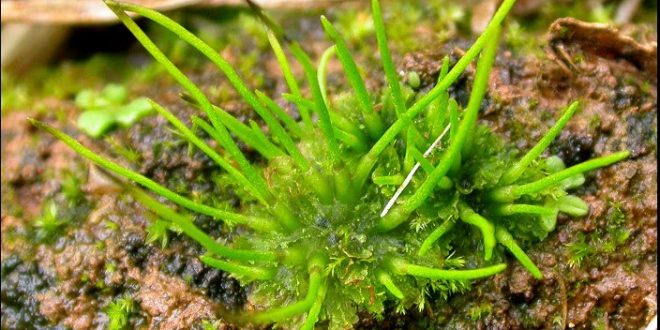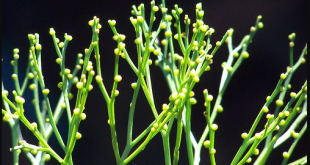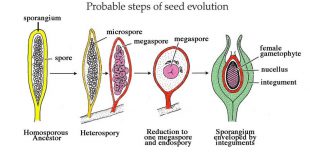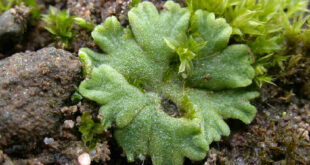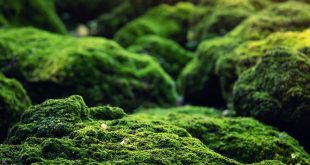Systematic position
Division: Bryophyta
Class: Anthoceropsida
Order: Anthocerotales
Family: Anthocerotaceae
Genus: Anthoceros
Habit and Habitat
The name ‘Anthoceros’ means ‘flower horn’ and refers to the characteristics horn-shaped saprophyte. Anthocerosis a genus of hornworts in the family Anthocerotaceae. With about 250 species, it is widely distributed in the tropical and temperate regions of the world. Species of Anthoceros are characterised by having a small to medium-sized green thallus. Anthoceros species are host to species of Nostoc, a symbiotic relationship. The hornworts grows on moist clay soils,on hill, in ditches and in damp hallows. A few species of Anthoceros grow on decaying wood.
Gametophytic phase of Anthoceros
External Features
Thallus: Dorsiventral, prostrate, dark green in colour.
Branching: Bilobed or pinnately branched.
Dorsal surface: Smooth or velvetely or rough with spines and ridges,thick in the middle and without a distinct midrib.
Ventral surface: Bears many unicellular, smooth-walled rhizoids.
Internal Features
The vertical transverse section of the thallus shows a very simple structure. It is composed of thin walled parenchymatous cells.
The outer layer is upper epidermis. The epidermal cells contain chloroplast. Each chloroplast has a pyrenoid. Cells of lower epidermis give rise to smooth unicellular rhizoids.
Reproduction
Vegetative reproduction
1. Fragmentation: By death and decay of older portion of thallus it reproduce new thallus.
2. Tubers: Under unfavourable condition, the marginal tissues of the thallus get thickened and form tubers.
3. Gemmae: Multicellular stalked structure develope along the margine of the thallus called gemmae. Each gemmae developes into new plants.
4. By persistant growing apoices.
5. By Apospory.
Sexual Reproduction
Development of Antheridium
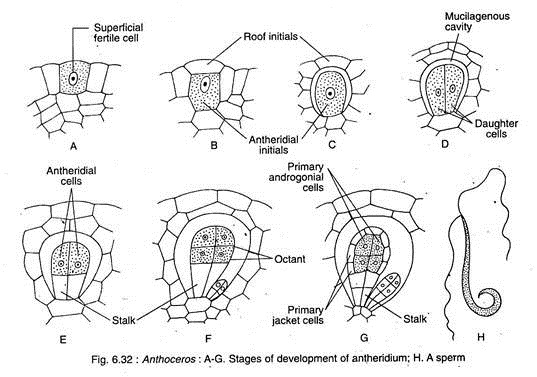
Development of Archegonium
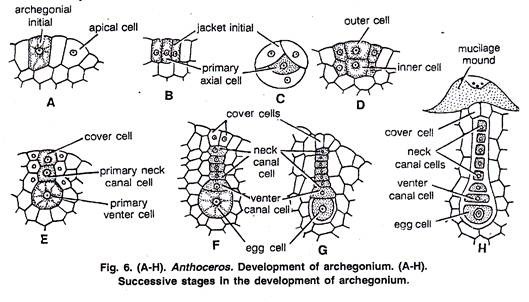
Development of Sporophyte
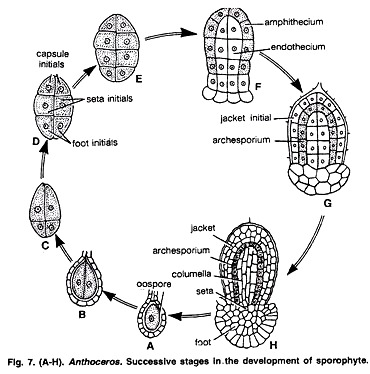
Mature sporogonium
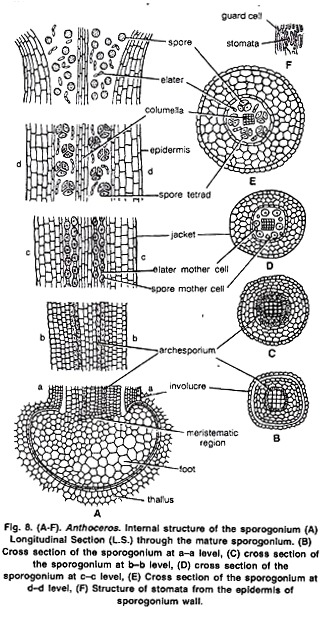
The mature sporophyte consist of bulbous foot and a smooth, slende, erect,cylindrical capsule. The sporangium appears like a bristle or horn, hence, the species are called hornworts.
Life cycle of Anthoceros

In Anthoceros, two morphologically distinct phase constitute the life cycle. The life cycle of this type which is characterised by alternation of generation and sporogenic meiosis is known as heteromorphic and diplomorphic.
Written by
Meher Afroz, B.S (Hons), Department of Botany, University of Dhaka
 Plantlet The Blogging Platform of Department of Botany, University of Dhaka
Plantlet The Blogging Platform of Department of Botany, University of Dhaka
